#information weaving
Text
Thought experiment regarding non-linear causal nets using an analogy of "dynamical chess"
Imagine a flexible chess board where each move of the chess figures alters the board. And each alteration of the board has effects on the figures as well, causing alteration in the behavior of the figures [a.k.a. the rules each figure has as a pre-defined rule]. | (That's entanglement of feedback-loops.) - This leads to chaotic behavior, making predictions even more difficult and "turbulent".
[This sort of chess is like the interaction between spacetime and matter.]
Following a helpful quote by John Wheeler:
"Spacetime tells matter how to move; matter tells spacetime how to curve."
- John Archibald Wheeler, Geons, Black Holes and Quantum Foam: A Life in Physics
---
Why do I use the neologism "non-linear causal nets"?
There is a kind of idiom-like brabble, called "causal chains". It states a linear string of cause-and-effect. This is often far too simplified for explaining real-life phenomena, because often there are far more causes to an effect than just one. There happen many "causal chains" simultaneously, so to speak. These causal chains are entangled. Multiple of such linear cause-and-effects are entangled, until they are no longer a linear-string or multiple linear strings, but a complex web. Each causal chain alters each other. That is basically a fundamental principle often recognized in quantum mechanics - interference.
It describes conservation of momentum in an analogy-based and merely imagination-based language of knots and loops, similar to some approaches of string theory and (loop) quantum gravity.
Information weaving
"Information weaving" might be the silly name I would use for that collection of conceptions and re-interpretations.
"Information transforms" in this conception are weaving patterns. In concrete, these are interaction patterns like
- replication of interaction pattern (like law of inertia)
- and interference/alteration of interaction pattern (momentum).
These two transforms are the two primary transforms. You can combine them and create all possible sorts of patterns.
Furthermore,... these relate to addition and multiplication of imaginary numbers, resulting in either a translation or a rotation in the complex plane... These might relate to the information transforms stated above.
But the research regarding this is really difficult and curently my mind is too sluggish and too over-crowded to compute it well enough.
It might take some years until it's less mad nonsense.
...
Spacetime as emergent property of entanglement
I enjoy the project It from Qubit and Polymath Vijay's interpretation that spacetime is emergent due to entanglement.
In my interpretation/analogy of "information weaving" time is a string, and space is the web consisting of that string. Space and time are hence "two aspects of one and the same thing".
This is especially interesting if you consider the difference between a time and a space dimension.
A space dimension has two ways of propagation, so to speak: left-right, top-down, before-behind... (to put it in plain words)
When it comes to the time dimension, I consider it to have only one propagation direction: The future, like in the conception of the arrow of time.
But here it becomes complex. Since time is "mono-directional", say, it has only one direction to propagate towards, it might interact with itself - via feedback-loops. This results in literal entanglement if you consider the arrow of time to be a simple string. Loop, knot and weave that string/arrow with itself and you might have spacetime as a complex result, so to speak.
In regards to quantum entanglement and superposition this interpretation might make sense as well, but I am not far enough with my research about that topic to summarize it coherently.
Furthermore, you can also define quantum gravity as the "degree of clotting": or, say: Let's interpret gravity as a principle of clustering: Areas with more density gain density, and areas with less density lose even more density, to reduce gravity to its primary principle.
Gravity is hence a re-distribution, a re-ordering of matter, or information, so to speak...
In regards to my information weaving conception, quantum gravity defines the density of information. It also defines how information re-distributes itself over time.
How the clustering happens depends on the patterns of interaction. And the patterns of interaction are affected by clustering as well. (Leading us back to Wheeler's quote above... )
What is "information"?
I regard information as an interaction pattern, a pattern in the web of causal nets, so to speak.
...
This is all a bit difficult to summarize. I will visualize it once I have summarized the parts of it well enough.
---
That was my literally chaotic thoughts as of today. It's a bit (/very much) incoherent.
#from the backyard of my theoretical bullshittery factory#information weaving#it from qubit#quantum gravity#analogy#analogies#chess#dynamical systems#non linear causal nets#entangled#entanglement#causality#cause and effect#conservation of momentum#quantum mechanics#information#quantum information theory#quantum information#quote#wheeler#spacetime#space#time#relativity#chaos theory#chaos#interaction patterns#math#mathematics#thought experiment
45 notes
·
View notes
Note
hey sweet pea, can we have a complication of poems/excerpts that make you fall in love with love and all mushy and gooey inside?









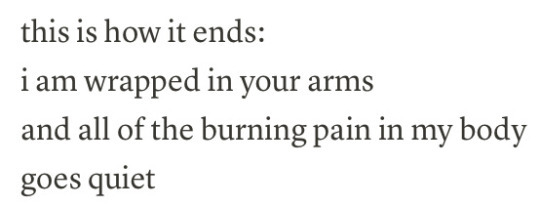

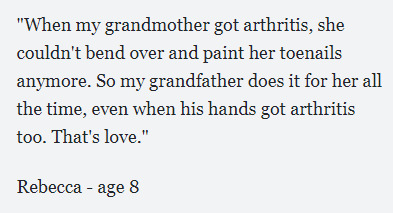
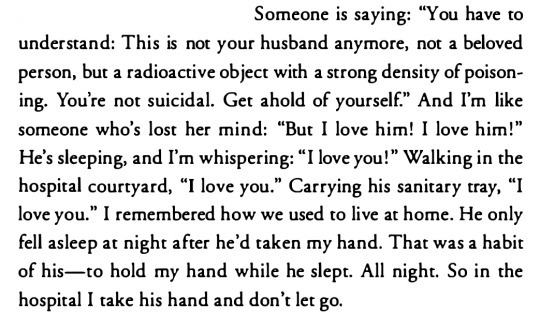


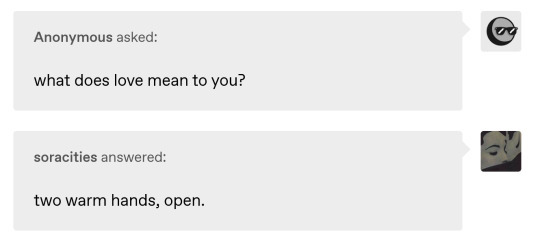




casey reiland my boss informs me that moose are dying \\ james baldwin if beale street could talk (via @morepeachyogurt) \\ virginia woolf the years (via @weltenwellen) \\ keaton st. james rural boys watch the apocalypse \\ sayaka saeki bloom into you \\ james baldwin giovanni's room \\ peter gizzi lines depicting simple happiness (via @typewriter-worries) \\ @typewriter-worries \\ lizzie cernik how we met: 'it's like waking up to sunlight every day. i yearned for a soulmate - and i've found her' (via @havingrevelations) \\ jules ryan gravecleaner: "bloodwater" (via @springmyth) \\ @nobaracore \\ ladan lakshiri what does love mean? see how 4-8 year-old kids describe love \\ svetlana alexeivich voices from chernobyl (tr. keith gessen) [lyudmila ignatenko speaking about her husband, deceased firefighter vasily ignatenko] (via @papenathys) \\ aimee nezhukumatathil lucky fish: "baked goods" \\ thomas campbell \\ @soracities \\ vladimir nabokov in a letter to his wife véra, jul 8 1926 (via @saintesorciere) \\ anne carson recreation \\ victoria hannan kokomo \\ victoria hannan kokomo
kofi
#there's a lot <3#on love#asks#anonymous#mine#my webweaving#webweaving#web weaving#webweave#web weave#webweaves#casey reiland#my boss informs me that moose are dying#if beale street could talk#james baldwin#virginia woolf#the years#bloom into you#sayaka saeki#giovanni's room#peter gizzi#lines depicting simple happiness#lizzie cernik#jules ryan#gravecleaner#bloodwater#nobaracore#ladan lashkari#voices from chernobyl#keith gessen
2K notes
·
View notes
Text
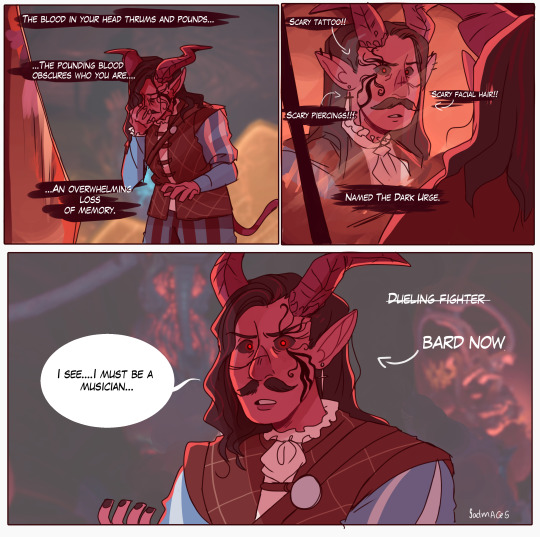
Finally found a bit for my Durge
#bg3#baldurs gate 3#bg3 dark urge#bg3 durge#my art#okay so Rogier. duelist sword fighter before the nautiloid. wakes up there with no memory and barely a sense of self#sees himself. finds a broken flute. decides okay okay. so im a musician. devotes himself to being a bard and doing things bards would do#shut up dark urges he needs to create!!!#ive been informed the durge run is uhm a lot so ill see if i can weave this into his story#gale romancer methinks.completely taken by his words. full of wonder for his control of the weave. the poetry of it all. like music to him.#any mechs followers i have left who see this devastatingly informed by my friends i have made jonny dville#rogier-posting
1K notes
·
View notes
Text


Aaaaaaa
Edit:

#kyle gallner#samara weaving#WE NEED MORE INFORMATION KYLE!#movies#okay we have more information now#adam rehmeier#carolina caroline
69 notes
·
View notes
Text
Candela Obscura: Needle & Thread is about, if it is about anything, parent-child relationships and the desperate desire for a closeness in the face of a yawning chasm of separation, physical, emotional, or both.
Sean and Margaret, the creature and mother, Nathaniel and his father, Jean and hers, Allison and Lucas. Even Beatrix and the child she never had, transferred onto Sean. (Marion is the only major character who does not fit neatly and completely into this pattern, despite the brief look at his relationship with his father.)
That desire for closeness—even when there is immense strain in the relationship, even when that desire has been suppressed into more of an involuntary instinct—escalates over the chapter until incredible violence is being committed in an effort to reduce these distances.
These parent-child relationships are even weaponized repeatedly in the finale. Sean takes the deal to save his mother. The person in the cage observes that Nathaniel's father never liked him as a device to rattle him and his father's face is worn to force him to hesitate. Violet lashes out at Jean before she dies by telling her that her father was happy when she told him that Jean was no longer going to visit.
There is so much longing for a parent or a child in this chapter. Sean wants to be with his mother again, and Margaret wants her sons. Nathaniel craves his father's love, and in the end, his father reaches for him. Jean grieves for her father. The creature wants to be with their mother, and their mother is distraught when her child is killed. Beatrix is wistful for the child she did not have. Much of Lucas's screentime is devoted to missing his mother, and Allison misses her son terribly.
There is also much to be said about sibling relationships here: Sean and his brothers, Nathaniel and his, the creature and their sister. Sibling dynamics inform the relationship between Sean and Marion, and Sean and Nathaniel. That's not the focus of this post, though.
I believe that it is specifically this web of parents-children and the various distances in their relationships that really is the core of the chapter. This is about a desperately intense, even violent, desire for a closeness in those relationships and the willingness to do basically anything to overcome the distances.
#I was like “I'm gonna make a short post and then really unpack it later” and then this post ended up being almost 400 words long#Candela Obscura#Critical Role#Candela spoilers#Candela things#circle of needle and thread#ETA: Spenser pointed out this post on Twitter :3 said it was satisfying to see#He also said a it about how this is indeed a major theme the table worked hard to weave into the chapter.#“That North Star helped to inform so much of how I prepped each session and framed each scene‚ especially the flashbacks.”#Really satisfying to see myself and so much more food for thought.
210 notes
·
View notes
Text







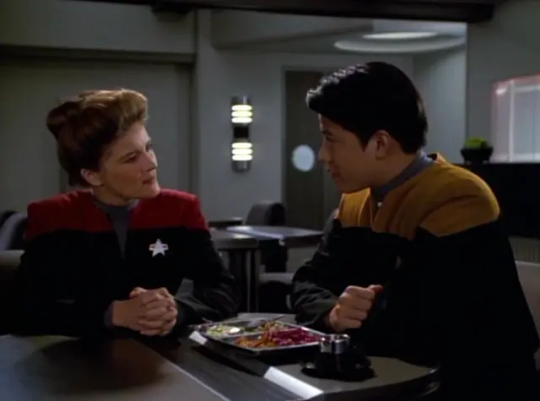
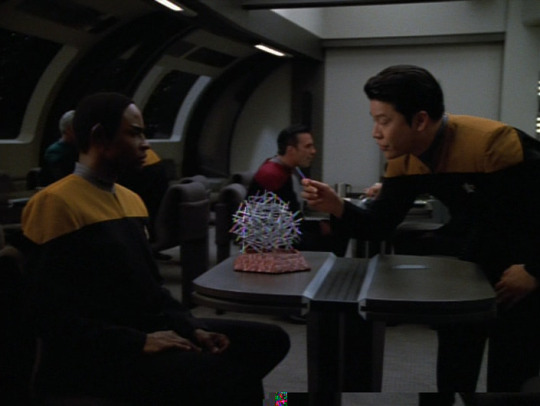








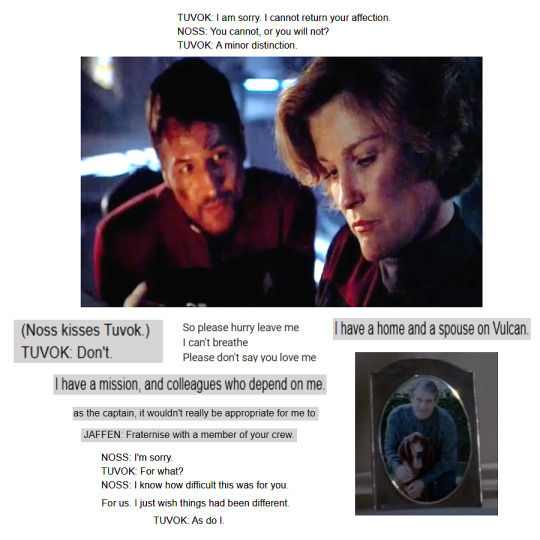



[Tuvok & Janeway: Control, Distance, Duty & Connection.]
Sources: St Voyager Transcripts / Mitski 'First Love Late Spring' / Disco Elysium
#web weaving#star trek web weaving#st voyager#Kathryn Janeway#Tuvok#be the change you want to see in the world - make a long post about Tuvok & Janeway's similarities <- angel on my shoulder#I feel like a lot of people see them as 'opposites attract' sort of friends where Janeway is unhinged & Tuvok reigns her in#but in reality I think that while there is that element in there (exacerbated HEAVILY by their delta quad circumstances)#what I see most in their relationship is how they both value loyalty and duty above all and are extremely rigid with themselves#and the people around them. How they both have to maintain distance from others bc of their positions as captain & vulcan#I hate when people dismiss Tuvok as not being remotely interested in Maryana or Noss - it erases an interesting struggle that he and Janewa#both share - their desire to stay loyal to their spouses vs the 70 years of loneliness that that loyalty demands of them#But they BOTH triumph and they BOTH remain loyal (Tuvok until he returns to T'Pel and Janeway until Mark informs her that it's over)#and for both of them it's a little bit insane for them to do that.#Isn't it more interesting that Janeway and Tuvok both have feelings for people other than their spouses but don't give in#to that temptation?#They're both people who live very fastidiously by codes. Either written codes or moral codes - they very rarely if ever do things because#it's what THEY want to do. I'd say they're the least emotion-driven members of the crew and yes I'm including Seven because Seven#has a very...how to describe? It's a blunt and insular selfishness. She does what SHE wants to do and doesn't really care about others.#To me that's emotion-driven. Or...personal desire-driven? Not a bad thing at all but very different from Janeway & Tuvok who#are always more 'this is logical' or 'this is for the crew' rarely do they think 'this is what I want' bc they can't afford to#for different reasons (captain & vulcan)#they both also are in the most 'caretaking' positions on the ship from my POV. Security and Captain - both are directly in charge of#ship and crew safety.#Janeway & Tuvok#star trek voyager#st voy#when I say caretaking I'm NOT saying they're everyone's mom and dad or whatever - I'm saying they're in positions where they always#have to think about the greater good and the crew as a whole and how much danger is acceptable etc etc.#Janeway is always killing herself for the crew but Tuvok is right there beside her
82 notes
·
View notes
Text
I keep thinking everyone knows the exact same information as me, but since I'm about to make more posts about textiles and clothing, as I'm reading the book on them, I'm going to write down some basic information, just in case it's not very common, because a lot of this I only gathered recently. If I get something wrong please correct me in a kind way!
So where does the clothing come from, and how do we make it? During most of the history, textiles were made by women, from natural materials; flax, wool, cotton, silk, jute. Recently we started using more synthetic materials, like acrylic, polyester, nylon, spandex. If you want to make clothing from the natural materials, like wool or cotton, they first need to be processed, cleaned and combed, then spun into yarn, or thread. Spinning is the process where women manage to pull a thin part of the material and spin the fibres into one consistent, firm thread. It's super impressive to watch them do it and I have no idea how they manage to make it consistent, I've not yet tried to do it myself.
Once the thread is done, it can be made into a textile by knitting, crochet, or weaving. There are also other more complex, decorative methods, like tatting or lacing.
For knitting, you need two needles, or a special circular needle, or, there are also knitting machines, which you can use to make woolen fabric. For weaving, you need a loom. For crochet, you need a crochet hook. While knitting and weaving can be done by a machine, crochet can only be done by hand. Woven fabrics are firm, sturdy, durable, and not stretchy, while knit fabric is the most stretchy and soft. I'm not sure about crochet since I only have one crochet garment, but mine is very sturdy!
All of these methods were historically done by women; families were able to grow flax plants close to their homes, and women would then create linens, woven textiles made from processed flax, which was used to make sheets and clothing. Linen was specifically useful in keeping people clean, since it's very good at absorbing moisture. Used as an under-garment, it was capable of absorbing sweat, and protecting the outer layers, which were not washed. Experiments have shown that frequently changing into clean linen was more effective at keeping clean than showering and then putting on the same clothing back on.
Women's ability to create clothing was sadly exploited, and women were even banned to sell it commercially, or from competing at the commercial market, but their husbands were allowed to profit off of their craft.
In the USA, cotton was the most produced material, however for this too people were enslaved and exploited; cotton took human labour to grow, harvest and process, it also required a lot of water, and caused destruction of environment, because of the chemicals used in it's growth, and the unsustainability of monocrops.
Creating a piece of clothing out of textiles, or sewing, is a process that still cannot be completely automated; while you can use a sewing machine, you cannot make a machine that would produce a whole garment out of textiles. No mass-produced piece of clothing was sewn by a machine, it always has to be made by a human being. This is why a lot of the sewing labour is currently outsourced to third-world countries and companies use modern slavery in order to create fast fashion; there is no machine that can do it, so by the rules of capitalism, the companies are trying to get that labour as cheap as possible, often at the cost of human lives.
We didn't use to have as many garments as we do today, in the 18th century people would have two outfits, one for normal days of the week, and one for Sunday. The clothing they owned was usually made to fit them exactly, either by a female member of the family, or a seamstress, and these garments were made to last them for decades. As clothing became cheaper to buy than to make at home, and more of it became mass-produced, people started acquiring more of it, but also using it for lesser period of time. This would eventually grow into a bigger problem, due to the amount of chemicals and labour used to grow, process, dye and sew the garments, and the amount of waste we were starting to accumulate.
Introduction of synthetic materials, like acrylic, made the yarn and the textiles much cheaper, however it lacks the important properties natural materials have. Do you ever notice how synthetic garments sometimes continue smelling bad even after you wash them? That is because they'll absorb sweat, but become hydrophobic when wet, meaning they will take in your sweat, but refuse to let it go once they're in the water. This means that the longer you have them, the worst their stink becomes. This, of course, can be hidden by the generous use of scented fabric softener, but it won't exactly make the garment clean. This information I've learned recently, but it helped me identify what were the most synthetic pieces of clothing I had. Acrylic clothing had also proven to shed 1.5 more microplastics than any other polyester when put into the washing machine.
Having our clothing grown, processed, spun, woven/knit, and then sewn far out of sight, it's possible to lose the sight of where it came from, or how it's made. Only by trying to do it yourself, or learning closely about the process can one learn to appreciate what a monumental task it is, to create fabric, or a garment. Other than the synthetic textiles, of which I still know very little of, all of the natural clothing is a product of plants and animals, it takes land, farming, agriculture and water to grow the plants, raise the animals, and then labour to process and spin the fibres. It's also something people used to do in their gardens, inside of their homes, something that was normal for women to do, and to trade for anything else they needed, saving them from having to work for wages. Women making fabric was always to the benefit of everyone around them, while m*n taking over the industry and doing it commercially, ultimately brought slave labour to a lot of people, cheap and low quality garments to the select few, and money to the hands of the exploiters.
Being curious about clothing and what becomes of it, is a big benefit to the environment and the future of the earth! Knowing what the textile industry is doing, and how does it affect the planet, can be a great motivator to try and sew, or upcycle and mend clothing, or create garments. It's presented to us as something women were forced to do in the past, and it's connected to 'feminine hobbies', but in actuality, it is power to create something humans cannot do without. Women in the past used it's power too, whenever they could. And we are the only ones who ever used this power for good.
#textiles#clothing#linen#women's history#herstory#radical feminism#sewing#weaving#crochet#synthetic fiber#random information on clothing i've gathered#i feel much smarter so i wanna share!#if anyone knows more and wants to share please add#my sources are the book Worn#and dozens of youtube videos on textiles I've watched recently
142 notes
·
View notes
Text
小さなお店ができました。
まだショールなどの大物はないのですけども、よろしければご覧ください。
時折お運びいただけますと嬉しいです<(_ _)>
I've just opened a small shop online store. Although now I don't treat sholes or long fabrics, but I'm really glad if you visit or introduce it someone who has interests in Japanese natural dyed textile items, thank you.
208 notes
·
View notes
Text


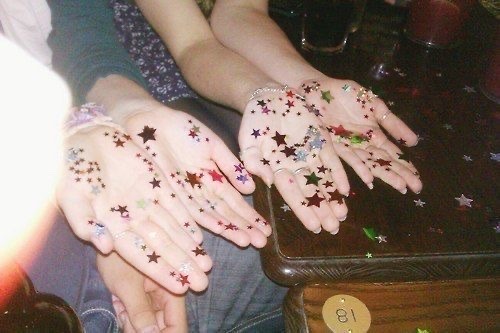






soul holding
lucy dacus, partner in crime // mazzy star, fade into you // the cranberries, i can’t be with you // photos, pinterest
#will prob delete#prob offensive#/ref#guys this may be cringe sorry#couldn’t find anymore lyrics off the top of my head… if anyone has anymore pls inform me#mazzy star#the cranberries#lucy dacus#web weave#web weaving
16 notes
·
View notes
Text
having a rollicking good time browsing the blogspot-hosted weaving blogs of various middle-aged and elderly women
#it's so exactly what i like reading the most#thoughtful technical detail. slightly poorly lit but extremely informative photos with a reasonably high text/photo ratio.#discussions of various books focusing on specific advanced technique + the blogger's experience implemetning them#tours of small european art museums feat. elaborate rugs with discussions of as much of the weaving technique as the author could#infer/learn with gentle lamenting that it would be nice if the wall labels were more detailed.#See My Post From 2012 Where I Explain Selvedges#et cetera. fucking great. so incredibly good#i dont know if there are more of these than for knitting-- probably not-- but w knitting i am slightly pickier and also have already read#a good number of them.#incredible vistas of blogs stretch before me.#box opener#weaving
19 notes
·
View notes
Text
sometimes i think about that one tweet that goes "one day i said out loud, 'when we're apart i think you must hate me, i picture you seeing my name when i text you and heaving this big sigh because i'm so annoying.' and he quietly said 'that's a little mean. i wish you wouldn't picture me like that that.' and something clicked." and go a little insane.
#text.#this tweet is constantly on my mind#from the day i first saw it in a screenshot til literally Right Now#i was writing and just sort of got hit with it outta nowhere#i like when information does tht to me#just kinda skuttles in without warning and weaves its way around my fingers and then leaves again#kind hello and friendly reminder#and then a just as nice parting
78 notes
·
View notes
Text
It doesn't need to be said (I am preaching to the choir), but after seeing a very bad faith interpretation of Gale nearly half a year after release, I am going to say it again regardless!
Gale is a victim, not a perpetrator. In his relationship with Mystra, he was preyed on and hurt, not Mystra. Yes, Mystra told Gale not to seek out the missing part of Weave that is a part of her, but Gale had no idea it was Karsite in nature and was not aware he was looking for something that was actively corrupt and dangerous until Act 3. Mystra did not inform him right out the gate. Gale may have went to seek it out despite her disapproval and erred and doomed himself for it, but Gale was also aiming solely to apologize for...wanting to be her equal. And I am saying it one more time: it is NOT Gale's fault for wanting to be on the same footing with his lover. No one wants to feel like they're looking UP at their lover, beneath them and not worthy of them. Gale was groomed. Gale was preyed on and eyed by Mystra since he was a young boy. He was her pupil, she, his mentor, and later, he became her lover. Of course Gale wants to feel equal to her. Of course Gale wants to be more. How could he not want to be more, to live up to his goddess that gave him an OUNCE of her attention? Lord forbid.
Gale is not some manipulator. How the idea that he, a mere mortal, could manipulate Mystra, a goddess, is truly beyond me—a goddess who told him to literally die to earn her forgiveness. While he may have had a more haughty personality in EA and was originally supposed to have tried to usurp Mystra in CONCEPT, a lot and a considerable lot has changed upon release. Gale is remarkably human. He is remarkably honest. He is so bare, so forward, and is practically the FIRST person to reveal to you everything you need to know about him among the party if you prove yourself trustworthy, which, let's be real, is a low bar (you save a child and he's impressed. Like. Truly. The bar is THAT low). Gale is arrogant, sure, but is also remarkably modest with his desires and has befuddlingly low self confidence and self worth. He does not try to manipulate Mystra or the player into anything. He's a dying man who honestly just wants to be told he's worthy of everything as just Gale DEKARIOS, not just as Gale of Waterdeep. He's ambitious because he has lived his whole life with the impression he's only worth something if he makes himself out to be something. There is no manipulation here, just a deeply wanting man who looks at 'the world is better FOR you' like it's worth more than all the riches in the world.
Gale may have his hang ups because he is well and truly traumatized, but that's because he's absolutely the victim in his situation. I get it. He's older. He's a grown man and Mystra talked so 'calmly' and didn't physically hurt him (even though she did turn a blind eye when Gale, you know, was afflicted with and living with a bomb in his chest), but that doesn't make Mystra any less the perpetrator of his traumas.
#OOC.#TBD.#Ugh... Still bad Gale takes in Feb 2024. okayyy...#the person who typed this said gale was a classic manipulator and they def believed#he withheld information and knew the weave was karsite the whole time#okay. so. we just want to believe so badly gale is a bad guy and twist facts to suit that very#bad faith interpretation... man the way people will do anything to point at gale#and just go see hes a dangerous incel or what have you... oh. truly not...#i am also very fed up of people going 'well they talked calmly so they weren't abusive.'#no more. as someone who had to endure my abuser being 'so calm' in their nonstop condescension and manipulations like MYSTRA i am here to#say: cork it. you dont need to be sneering or yelling to be abusive. and for that matter#gale getting angry after he realizes mystra wronged him isnt abusive or toxic either. hes reacting FINALLY to the wrongs of his abuser#like. man. just enough.#i have a lot of thoughts. clearly. but gale was essentially gaslit into thinking he deserved what he got. my abuser also did that to me#and i just think we should stop blaming victims :)
15 notes
·
View notes
Text
eugh.... spent a few hours writing toyhouse bios for my iterators but i dids it . feel free to check it out if you'd like to find out some new stuff about characters you probably had no idea even existed, or to find out old stuff if you want. go reread the same wayback facts
#quite frankly some of them dont have as much information as the others but i jkust dont know. i dont knowwwwwwwwwwwww#idont know what to say. maybe one day i'll come back to weaving and write some more for them. but i tired#will also have to write for the ancients eventually but swagever#crammerposting
14 notes
·
View notes
Text


Some snippets of this past week.
I've been crocheting and coding a pomodoro timer page, but not much else...
Gonna try to rest as much as possible before the start of the new semester! All my grades are out except one, and I'm pretty happy with the results so far :)
Hope everyone has been doing alright!
#uni#studyblr#study#life#coding#information technologies#codeblr#crochet#weaving the ends is gonna be such a pain...
13 notes
·
View notes
Text













Game of Life - JubyPhonic ; Vane Lily - My Eternity ; GHOST - Hyperdontia ; Lukewarm - Penelope Scott ; "How The Internet Changed Found Footage Horror" by Pim' Crypt on YouTube ; Zero Win Game by kayzero
#web weaving#that's something I do now apparently#I mean this one's all over the place but I wanted to try for a while#I dunno there's some kind of ze related thoughts going on here#mostly rotating akane and phi in my mind I think? idk#I always think of them when I listen to the songs that are here#especially in zwg context as informed by the direct quote the “you found it your way out'' that scene comes back to haunt me constantly#I wasn't really gonna post this impulsive brain brr moment but then I thought 'no my beautiful mutuals should see it they get me' prolly#also @ u kay. sowwy it's the tism#hm. I wish we had a mutuals only reblog setting
23 notes
·
View notes
Text

She had an old picture of me. It was frightening. Dated 1933.
[Song: Strange Love by The Unlikely Candidates]
#Chakotay/Tuvok#The fact that Tuvok potentially has tons of info on Chakotay is so interesting#personal information based power imbalance vs rank power imbalance#delicious...#Chakotay can order Tuvok to call him 'sir' but Tuvok has a file on him on his brain that includes not only readily available information#but things that can only be obtained while in close proximity to a person & all the people they're closest to.#speaking and working with them every day for several months#web weaving#Tuvok#Chakotay#star trek voyager#st voyager
17 notes
·
View notes